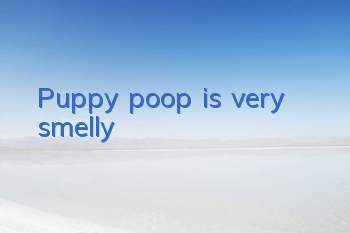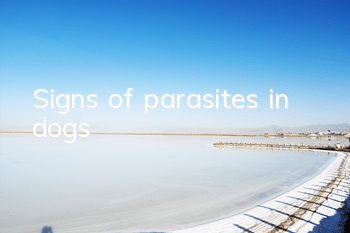The life of pets in winter is very simple. In addition to eating and drinking, they just need to find a warm place to sleep. The whole day passed like this. In addition, many owners feed them a lot of delicious food, so they become "fat". But owners may not know that many serious diseases are currently related to pet obesity, many of which will shorten their lifespan. When spring comes and the weather gets warmer, it is necessary for owners to increase the amount of exercise for their pets so that they can join in the process of losing weight. The dangers and causes of obesity
Obesity is mainly caused by overnutrition and lack of exercise.
Homemade feed is more likely to make pets fat than professional food. Obese dogs are prone to circulatory and respiratory diseases. Their tolerance for exercise and resistance to infection may also be reduced. Obesity in dogs can cause diabetes, liver disease, arthritis, allergies, skin diseases, etc. Obesity in cats can lead to urinary disease, diabetes, liver disease, and make grooming more difficult, which can lead to skin disease. Moreover, veterinarians will encounter a lot of inconvenience when performing various routine examinations and diagnoses on obese pets. They are at higher risk for complications during anesthesia and surgery, and are more likely to have wounds that collapse after surgery.
Some pets’ obesity is not seasonal, but develops during the growth period. They also need to lose weight. Generally speaking, obese animals will enter a stage of appetite at a certain point in their lives and eat more than their bodies need. The energy taken in will be deposited into fat and increase weight. During the subsequent quiescent phase of appetite, fat is retained, but weight remains relatively stable even with normal or even decreased appetite. This situation may confuse some pet owners and find it difficult to understand why their pets are overweight even if they are not overeating. Overweight dogs and cats from childhood often lead to obesity in adulthood because excessive diet during the growth period causes an irreversible increase in the number of fat cells, and adult pets increase the size of these cells. Obese puppies will develop the habit of constantly begging for food as adults.
How to tell if a pet is overweight?
Some signs of being overweight are obvious in dogs and cats, while in others they are harder to tell. Body weight is a useful indicator, and an animal is generally considered overweight if it exceeds 15% of its normal ideal body weight. Standard body weights for purebred dogs can be a useful guide to determining "ideal" weight, but may not necessarily apply to crossbreeds. Most healthy cats weigh between 3-5kg, but some cats with larger frames, especially castrated males, can weigh much more.
In a normal animal, you should just be able to feel the ribs under a not-too-thick layer of fat, and when looking from top to bottom you should be able to see a clear "girdle line" behind the rib cage. Obese animals have no waistline because the layer of fat beneath the skin thickens. Cat fat usually accumulates in the groin to form an "apron." Obese dogs and cats have bloated bellies due to the accumulation of large amounts of fat in their abdomens.Your veterinarian will differentiate between obesity and other factors such as pregnancy, ascites, or enlarged abdominal organs.
Weight loss plan
Ask a veterinarian
Get a physical exam from your veterinarian before starting a weight loss program on an obese animal. Your pet may need medication or there may be an underlying disease that is causing the weight gain. Your veterinarian will use techniques to determine if your pet is obese.
Determine goals
Understand the ideal weight your pet should have. Remember, the initial weight goal you want to achieve can be your ideal weight or a 15% reduction from your current weight.
Set a meal plan
Weight loss can be achieved by controlled reduction of the caloric energy content of food. For this reason, you can use commercially available low-calorie pet food, or reduce the original food intake. You should try your eating plan a few times before finalizing it. The selected feeding plan should be carried out for at least two weeks, and then the feed should be reduced further depending on the results.
The dog's weight loss plan is to feed the dog 40% of the calories needed to maintain the target weight every day for 12-14 weeks. The caloric content of the food fed to the cat should be 60% of the amount required to reach the target weight, and the weight loss time should be 18 weeks. Never adopt an overly strict weight loss program for your cat as this is potentially dangerous and may even have fatal consequences. Divide food into two or three small portions each day. This reduces hunger and allows each meal to be fully consumed. During the weight loss phase, your pet will definitely feel hungry. No matter how pitiful it looks begging for food, don’t give in! Explain this principle to your friends and neighbors as well, convincing them that it’s in your pet’s best interest.
Weigh yourself regularly
The implementation of your pet's weight loss plan should be carefully tracked. Weigh yourself once a week, preferably at the same time of day and on the same scale. Chart your weight changes over time to boost your confidence and motivation. Pay attention to your pet's expression and touch the fat layer in the body regularly. Consult your veterinarian regularly to determine if modifications to your weight loss plan are needed.
Participate in more exercise. Although it is impossible for most animals to lose weight through exercise alone, a gradual increase in exercise should be encouraged. Never force a severely overweight dog to exercise excessively, as this may put unbearable stress on the heart and lungs. Dogs that are 25% over their target weight should be taken for a slow walk every day. Be careful not to allow cats to obtain extra food by foraging in the wild, hunting, or begging for food from neighbors.
Prevent repeated weight gain
Once your pet reaches goal weight, be careful to maintain the ideal weight. For dogs that are prone to obesity, it is best to feed branded food and keep an eye on their weight to find out the most appropriate amount of food. Instead of falling back into your old overfeeding habits, adjust your diet to your activity level.








